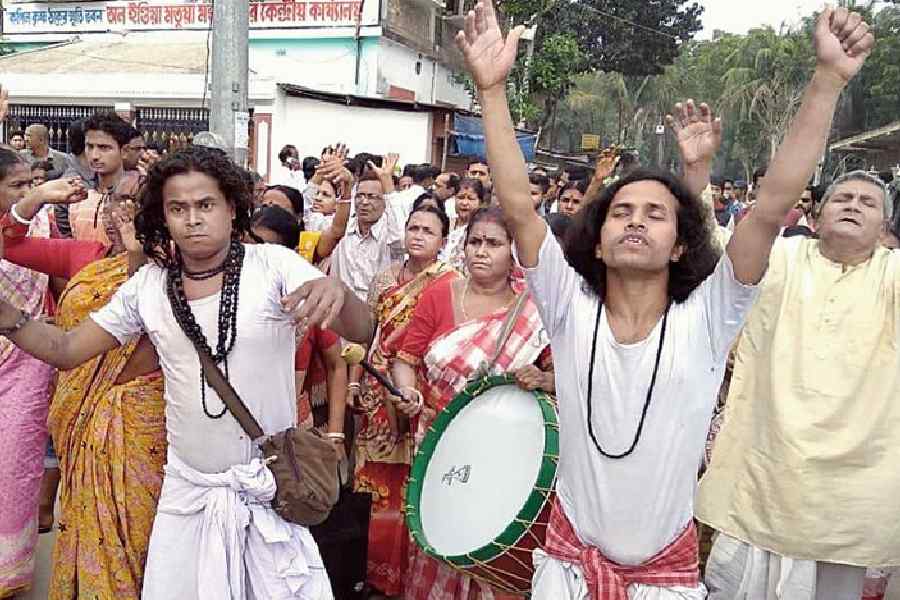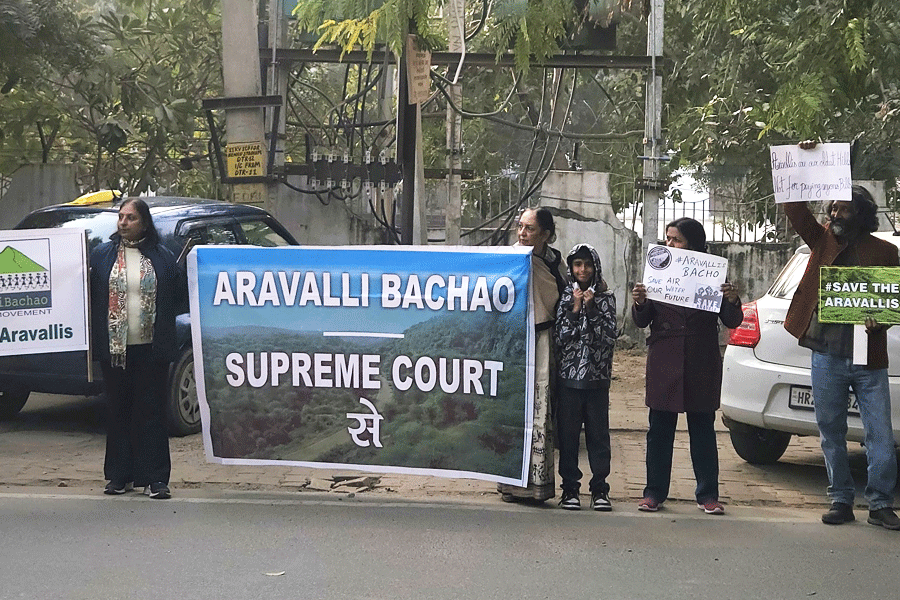 |
To believe in paradise is easy, but imagining is not. Poets and prophets have had to show us the way. Buddha performed enlightenment, an existence without suffering. The vikings dreamed up Valhalla, hall of dead heroes battling by day and feasting by night for eternity. Dante famously described a heaven ruled by reason — the list goes on, with each paradise based on different conceptions of god, reality, salvation and delight.”
For Assam’s Amal Prabha Das, the paradise was rendering service to the suffering humanity. She created her heaven at a hermitage atop the Sarania Hills, Guwahati, from where she served the children, women, harijans and the downtrodden section of the society and lived the ideals of her role model, Mohandas Karamchand Gandhi.
In 1934, when Gandhi came to Assam in connection with the harijamovement, he stayed at the residence of Dr Hare Krishna Das. The young Amal Prabha, Hare Krishna’s daughter, had a chance to observe Gandhiji’s work and lifestyle from a very close quarter. The encounter left a deep and positive impression on her mind. She decided to dedicate her life to serve the nation, following in the footsteps of the Mahatma.
Amal Prabha was a lady with an amiable nature and a mind of steel. Having been denied admission to Cotton College by principal Thomson in 1927 — girl students were not admitted to colleges in Assam till later — she proceeded to Calcutta. There she did her masters in applied chemistry, earning for herself the unique distinction of being the first Assamese lady to obtain a postgraduate degree. She also did a course on clinical pathology at Calcutta. Later she was offered a teaching job at the same Cotton College, which had denied her admission earlier. However, imbued with a nationalist spirit she refused to serve in a college run by the British government. Instead, she decided to serve the community.
In 1939, Amal Prabha, along with her illustrious mother Hema Prabha Das, visited the Maganbari Centre of Self Development at Wardha for three months to get acquainted with the social activities and village reform movement of Gandhiji.
Inspired, the mother and daughter decided to set up indigenous cottage industries on their Sarania Hills land. The ladies also started training the downtrodden masses so that they might stand on their own feet. That marked the genesis of many a creative activity atop the hills.
Immediately, upon their return to Guwahati, they established various small scale manufacturing units like extracting honey, soap-making, handmade papermaking, extracting oil from oil seeds etc. Weaving got special emphasis. Gradually the place became a centre of excellence spreading the Gandhian concept of gramodyog in the entire Northeast.
The Kasturba Gandhi Memorial Trust was created after Kasturba’s demise in 1944. Gandhi now wanted to spread the work of Kasturba Trust to every nook and cranny of the country. To look after its work in the Northeast, Gandhiji chose Amal Prabha. Her mother had expired by now and her father Dr Hare Krishna Das donated their entire property in the Sarania Hills to the Kasturba Gandhi Trust. The place now came to be known as Kasturba Ashram.
Gandhiji came to Guwahati in 1946 and stayed at the ashram for three days from January 9 to 11. A small Assam-type structure was constructed for Gandhiji’s stay. The hut stands till this day. At the initiative of Kasturba Trust, the Gram Sevika Vidyalaya was established. The school was dedicated to the nation by Gandhiji during his visit.
Amal Prabha was the heart and soul of this ashram. “Yeh ladki chatur hain, kam kar sakti hain,” Gandhiji commented about Amal Prabha.
The Sarania Ashram was by now bubbling with more creative activities. It became the pivot of Gandhian activities in the state. In course of time, it established 21 gram sevika kendras in different parts of the region including Arunachal Pradesh which are still operational.
In 1950 when a devastating earthquake ravaged Assam, hundreds of volunteers from Kasturba Ashram and the gram seva kendras rendered yeoman’s service to the suffering masses. Kasturba Kalyan Kendra was established at Lakhimpur under the umbrella of Kasturba Ashram for the widows and the orphans who were rendered homeless by the earthquake. In the same year, at the initiative of the ashram, Gauhati Katai Mandal was formed with the students and general public. The mandal aimed at strengthening the concept of self-help and gramodyog.
Two years later Amal Prabha started Guwahati Yubak Sevadal with school and college students for emancipation and rehabilitation of harijans — this movement was basically instrumental in establishing the Harijan Colony at Solabeel area in the heart of the town. The workers who trained at Kasturba Ashram were always available, even at a short notice, to work as soldiers at places affected by communal clashes, border disputes and natural calamities. In course of his bhoodaan movement when Binoba Bhave came to Assam, it was Kasturba Trust volunteers, under the supervision of Amal Prabha, who managed the entire programme.
Many of the present generation do not know that it was in Assam, particularly the area under Dhakuakhana and Dhemaji, that the bhoodaan movement took concrete shape of gramdaan. The draft of the first Gramdaan Act was prepared by the Kasturba Trust, Guwahati and presented to the government of Assam and was promptly made into a law at the untiring efforts of Amal Prabha. At Guwahati, Mahendra Mohan Lahiri donated 100 bighas of land on which she started the work of Assam Go-Seva Samiti.
During her lifetime, Amal Prabha was the heart and soul of Kasturba Ashram. Though born with a silver spoon in her mouth and blessed with the best of educations, she had no attachment or illusion for power, position and self. She could, therefore, so easily and gracefully decline the award of Padmabibhusan conferred on her by the government of India for the great service she had rendered to the people through Kasturba Ashram.
After her demise, her mantle is being carried by her erstwhile colleagues like Sakuntala Chowdhury and Hemo Kakati, both octogenarians, who stay at the ashram to look after its varied activities. Though the customary prayers on the stroke of midnight every August 14, which were a regular feature of Amal Prabha’s Independence Day celebrations, is practised no more, the inmates of the ashram in their simple khadi mekhala and dupatta still gather to sing Ramdhun and offer prayers as Amal Prabha did everyday. The simple practice elevates them to their paradise, even today.
Dipankar Banerjee










